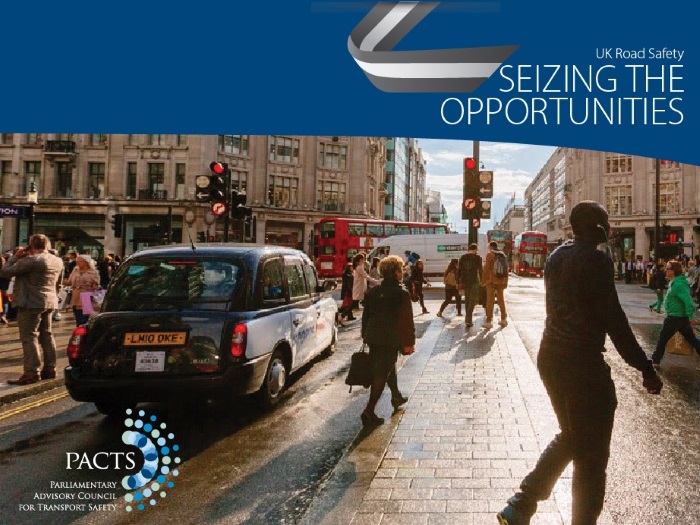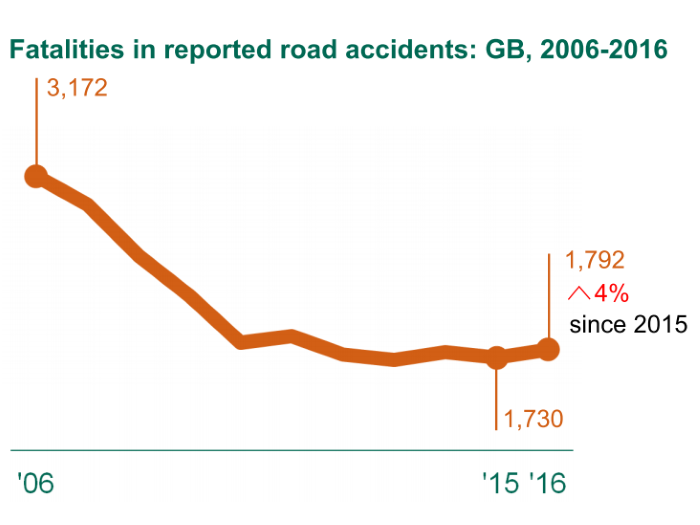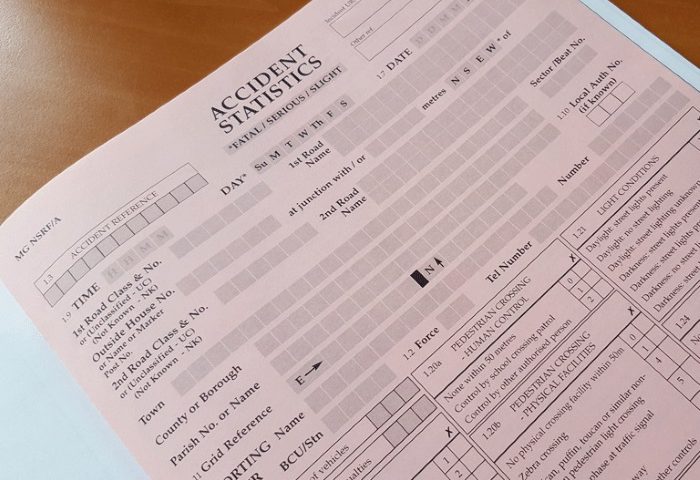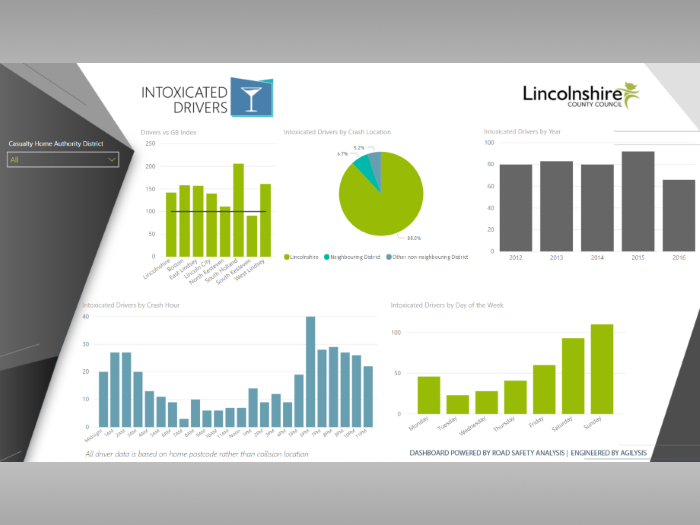
Road Safety Analysis plays key role in call for next parliament to commit to road safety revamp
May 25, 2017
2016 GB Casualty Data Released
September 28, 2017Old certainties and new challenges: GB Road Casualties Main Results delayed
Following the late decision by the Department for Transport to delay the publication of the main 2016 collision and casualty results, Bruce Walton explores why this has happened and whether this is a one-off or new trend.

In these turbulent times, it’s nice to have some things you can rely on. Wimbledon in June, bank holidays in August, bonfires on the fifth of November: annual rituals like these bring stability and rhythm to our lives. For every one of my fifteen years working with road safety data, the annual release of DfT’s road casualty statistics has come to feel like one of these things: main results in June, full report in September, and all’s right with the world.
No more. On Thursday 16 June 2017, the Department announced that “the planned release of ... road casualties … main results [for] 2016 [due] on 29 June 2017 has been postponed to 28 September 2017”. In other words, we will not find out how many people were reported as killed and injured on Britain’s roads last year until ten months after the final event, which is three months later than ever before. It’s like they postponed Christmas until Easter. So, what happened? The brief statement blames “a delay in the supply of data” from the police, though the identity of the offending force or forces is unspecified. In past years DfT’s deadline for receiving this data has generally been in late April, but this year some if it still has not arrived by mid-June. Clearly, something has gone badly awry.Practitioners, stakeholders, politicians and journalists will be hunting for scapegoats. The most tempting targets for criticism may be the police data collection process, the new CRASH reporting system now in use in around half of England’s forces, and the Department itself. However, it would be unfair simply to hang any of these out to dry. It’s more complicated than that; more of a series of unfortunate events.
It is well known that police forces have been required to achieve substantial reductions in spending in recent years. According to the Association of Police and Crime Commissioners in 2015 “budget cuts will radically change policing”, and given the understandable desire to protect the front line, back office systems are coming under pressure. Under these circumstances, allocating scarce resource to what may be perceived as a non-core activity is likely to be a tempting target for achieving savings.
Without it [the data] we become less well informed and more out of date, and crucially less able to keep decision makers and the media apprised with what is really going on out there on our roads

CRASH, an online tool designed to provide standardised collection, storage and validation of police casualty data, is a laudable attempt to bring casualty data recording into the 21st century. However new systems always mean new challenges, which can be difficult to address when resources are shrinking. This is exacerbated by the fact that CRASH is only accessible via PNC, and consequently local authority staff with long standing skills and experience in data entry and checking have perforce been removed from the loop. This makes it even more challenging for hard pressed forces to bring appropriate resources to bear.
The Department for Transport is largely at the mercy of circumstances over which it has little control. Police forces collect statistical road safety information at the behest of the Home Office, which is not otherwise a stakeholder in road safety issues. The Department has no authority over the forces, nor over their systems, procedures or standards. It cannot mandate police actions: all it can do is request, cajole and assist where it can. Achieving this in a reasonable time frame has always been a delicate task: under the stress of this year’s circumstances, it has finally proved impossible.
There are other issues too. Even when the data has been collected, there will be some uncertainty surrounding its quality. For instance, when police staff are under pressure there is an inevitable temptation only to enter the minimum data the system will let them get away with. Because CRASH is (rightly) seeking to address the longstanding issue of casualty under reporting, it is rumoured this bar has been set low. As a result, valuable supplementary data may go unrecorded.
There are also concerns around the issue of data comparability with previous years, essential for meaningful trend analysis. Another important innovation in CRASH is greatly improved recording of the nature of injuries suffered by victims. However, this desirable enhancement may result in an unintended consequence: significant deviation between the number of casualties classified as “Serious” by forces which use CRASH, compared both to preceding years and to forces which do not. DfT have indicated that guidance on managing this discrepancy will be provided, but this subtlety may be lost on non-expert observers.
Why does all this matter? Any road safety professional reading this already knows the answer. The profession relies on intelligence from this data to make informed judgements on optimal ways of allocating scarce resources to casualty reduction, and to evaluate progress made by interventions already implemented. Without it we become less well informed and more out of date, and crucially less able to keep decision makers and the media apprised with what is really going on out there on our roads. The consequence is likely to be gradual erosion in our professional efficacy when it comes to saving lives.
So, what can be done? There is now no way to bring forward the release of data this year. However, we at RSA will be reaching out to colleagues across the profession to offer what support we can. We will strive to obtain data as quickly as possible, and update MAST Online as soon as feasible after the publication of Reported Road Casualties Great Britain on 28 September. We stand ready to provide expert support to practitioners who may be struggling to implement new or unfamiliar processes. We will add our voice to others in the road safety community who may express concern about these issues.
It’s tempting to think that these are merely statistics about tragedies past; that given all the other challenges which abound for public services at present, it doesn’t really matter all that much. But it is a mistake to underestimate the power of data: it becomes extremely difficult to engage with problems effectively if you don’t know how big they are or where they lurk. Road safety is a major public health issue, and we ignore it at our peril.
Bruce Walton is the Technical and Analysis Director of Road Safety Analysis, a not-for-profit company which provides the award-winning road safety data tool MAST Online. He has previously worked in both police and local authority road safety data roles, and was Project Manager of the DfT funded MAST Project. He is a member of DfT’s Standing Committee on Road Accident Statistics.




